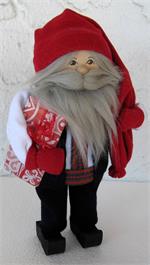 Today, Father Christmas is an easily recognizable figure across the world. The classic image that most people have of him, however, comes from a more enigmatic piece of folklore. The Swedish tomte, originally perceived as a spirit residing on farms and looking out for their wellbeing, has a long and storied history that makes it one of the most interesting pieces of the country’s culture.
Today, Father Christmas is an easily recognizable figure across the world. The classic image that most people have of him, however, comes from a more enigmatic piece of folklore. The Swedish tomte, originally perceived as a spirit residing on farms and looking out for their wellbeing, has a long and storied history that makes it one of the most interesting pieces of the country’s culture.
Tomte translated means “homestead man,” and this is a fairly straightforward interpretation of what the mythological being is meant to be. It is believed that the first of the spirits were originally human — the very first farmer, who continued to tend to his home after passing away.
If one has an orderly farm that runs well, for example, it might be a sign that a tomte is lending a hand to the current owners. They tend to reside in specific areas, such as barns or pantries and take care of the house or much-valued farm animals. Their association with winter comes from the help they are said to give when the days get darker, and there is much work to be done before Christmas.
From this association and other popular figures grew Saint Nicolas or Father Christmas. The traditional interpretation of him as an older, good-natured man was adopted by the Coca Cola company in their famous early advertising. From there, the tomte became a welcome presence around the world — if only by a different name.



